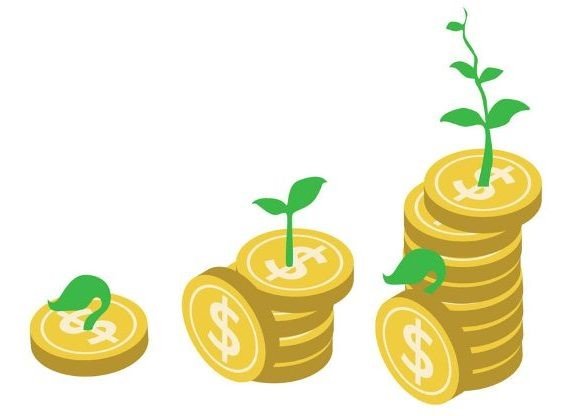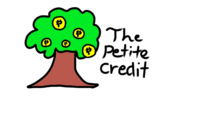Leap into Microcredit

By Julian Tan | February 28th 2021
Have you ever heard of Muhammad Yunus or came across articles quoting him or writings on the topic of microcredit?
Mr. Yunus is famously known for pioneering the concept of microcredit and microfinance. He in fact won a Nobel Peace prize for his lifelong work and efforts into this field, which has raised critical questions of how the world can address poverty alleviation through microcredit and access to capital for the poorest of the poor. Unlike traditional banks or lending institutions, the question of providing credit to credit worthy borrowers are completely thrown out of the door in the world of Mr. Yunus. Traditional banks are not willing to make small or microloans to the poor even at a reasonable interest rate, due to risk of default and cost considerations. Mr. Yunus thought otherwise and had faith that the poor will repay the money, if given a chance to find some success or break through in life. He believed in an entrepreneurial spirit, and took action.
I first came across Muhammad Yunus work and was intrigued by it. Here is a man on a simple yet noble quest to help others, to bring someone out of poverty. It starts with one borrower, and to the next person, and to the next entrepreneur that is in need of a very small amount of funds for their small business. It is in essence lending provided to a small startup or entrepreneurial venture needing capital, or infusion of necessary working capital. Mr. Yunus gave his first loan, in the grand total of US$ 27 to 42 women in a Bangladeshi village. As his work took root in Bangladesh, he eventually started Grameen Bank where the concept of microcredit became mainstream and was widely followed and adopted in other parts of the world. He created a system of trust and community, where borrowers enter into a system, where peer pressure and support of each other, allows appropriate follow up and repayment of these micro loans. Mr. Yunus provides micro loan without requiring any collateral from borrowers. It is the complete opposite of any so-called proper lending institution. Interestingly, majority of the borrowers are female, and historical repayment rates are known to be over 90%. Not bad at all, for lending without needing any collateral or guarantee.
In my mind, the heart and soul of Mr. Yunus pioneering work, is a belief that every human being deserves a chance in life by starting a small business enterprise. Any income from business ventures, in most instances helps borrowers feed their family, helps them get a decent life, and hopefully will lift them out of poverty. Sometimes, the tiny loan amount could be used for emergency needs, where a borrower needs assistance for extra funds to tide them through a difficult situation. All in all, as I read into Mr. Yunus work and the work of Grameen Bank, it was humbling to know how his tiny loans go out to people who are really in need, in various ways. The idea of getting involved via micro financing took root within me. Although I sat on it and did not take any action, it was one of those revelations, which was always at the back of my mind.
In May 2020, as Covid-19 was taking shape, my family and I were in a lockdown in Dubai. Like everyone else, we were only allowed to leave our home every 3-4 days to purchase groceries, whilst working from home. At that time, I came across this microcredit organization, Akhuwat based in Pakistan. Similar to Grameen Bank, the Akhuwat organization’s purpose, is to provide microcredit in Pakistan. They are also involved in many other noteworthy causes in education, health services, and clothes bank. Reading about the Akhuwat endeavors somehow re-ignited a spark within me to consider doing something meaningful via microcredit. Starting a micro bank outright modeling Grameen Bank seems too far fetch or should I look into joining a microcredit organization? Alternatively, perhaps I can try to give out some small loans via organization like Kiva.org.
After some initial discernment, brainstorming, and planning, all I knew was that if I was going to get involved it was not just about coming up with funds, but I needed to take a leap of faith and to be engaged in each step of the way. I thought that even if one person or a family could benefit from a small loan it would have been worthy of fulfilling this call to action. Deep down in my guts, I knew that I had to try, to start. Even if we get nowhere, it would be a wonderful learning experience. There were many questions but ultimately we just have to get cracking. I confided with my wife Irene Clare Ang, who was fully supportive of getting started with microcredit. The question was where and how do we begin?
May 24, 2020, (which is my mother’s birthday), was the day I noted down most of my initial thoughts on this microcredit adventure. Patricia Tong Kim Heng, my mother, came from very humble beginnings. I thought of her working hard and giving her life as a sacrifice for raising us children to who we are today. Patricia was born in 1942 in the midst of the Second World War, during the Japanese occupation in Malaya. She lost her father at a tender age of five and grew up in a rubber taping family. She worked hard growing up and did not get a chance to have any formal education. My mother, however, was resilient and resourceful, and eventually learnt grooming and beauty salon skills and started her own small business. After her marriage to my father, besides being a homemaker, my mother did various sewing related work i.e. tailoring, curtains, and other odd jobs. She saved up any additional income for our family. She did not have access to any credit or took any loans that I can remember. She however was part of an informal ‘tontine’ system, where she contributed money monthly to a pool of other contributors. It is a system used by the poor to save and pool money and used when necessary. It is based on a trust system and the pooled money could be called upon and rotated amongst contributors.
I first shared my microcredit thoughts and plans with my sister, Alice Tan Pei Pei, who is a missionary based out of Philippines and Laos serving youth and young adults. Coincidentally, Alice was also in recent discussion of needing small loans to fund some of their community member’s entrepreneurial or learning projects. These projects could be for farmers, or youths or borrowers in various third world countries in Asia. After our discussion, we knew that we would take this leap of faith into micro credit. In the midst of Covid 19 pandemic, it somehow definitely added more urgency and impetus to start this micro credit endeavor. It was a calling that we needed to fulfill. We would start lending, with funding made and repaid, could be recycled again to another borrower.
The Birth of Petite Credit
On June 18, 2020, we gave out our first microloan totaling US$ 553.75 converted to 4 million Laotian Kip to a borrower from Laos. Her plan was to start a fruit shake store near a school, which will be managed by her 22-year sister. Our second microloan for US$ 300 was given out on July 4, 2020. This borrower needed the funds to complete her studies at the National University of Laos. Payback was to be made after her graduation.
How Petite Credit Works
How does Petite Credit work in loan review and disbursement?
It is very straightforward and simple as following these guiding principles:
- Loans are interest-free
- There is no profit motive with Petite Credit
- The maximum loan amount is US$ 500. (There are exceptions made as the first loan disbursed was $53.75 over the threshold amount)
- There is no application fee
- All are welcome regardless of race, color, or religion
- A one-page loan application/agreement specifying the loan amount, the purpose of the loan, loan repayment plans, and guarantor
- A Motivation Letter or Business proposal
- Types of Loan: Business, Education, Health Emergency, Liberation Loan. *After we began lending, Petite Credit gave out a loan for a house roof repair, which created a new category of Capex loan*
- A one to one Zoom interview
As Confucius remarked, the journey of a thousand miles begin with the first step. Often times, the first step may possibly be the hardest. Never in my wildest dream, would I envision a leap into the world of micro credit. It could easily have been a project that I could easily or conveniently rationalized to wait until a later time or a retirement project. Petite Credit has taken our first few baby steps. I have to thank Irene, Alice, and Gabriel my son for their involvement, support and encouragement. I hope that my son, through his involvement in Petite Credit, will learn some finance and related basics, but much more importantly, experience and learn the importance of giving back. If we can be of a small helping hand to a stranger, brother, or sister in need, we hopefully become a better person.
Thus far, there has been interesting learnings and encounters with each borrower. Each person has his or her own story and motivation. Often, I am moved deeply by their lives and desire to be better tomorrow than today or to help their loved ones. I hope that we will be able to share some of their stories, and somewhere out there, someone may be inspired by their actions and examples.
